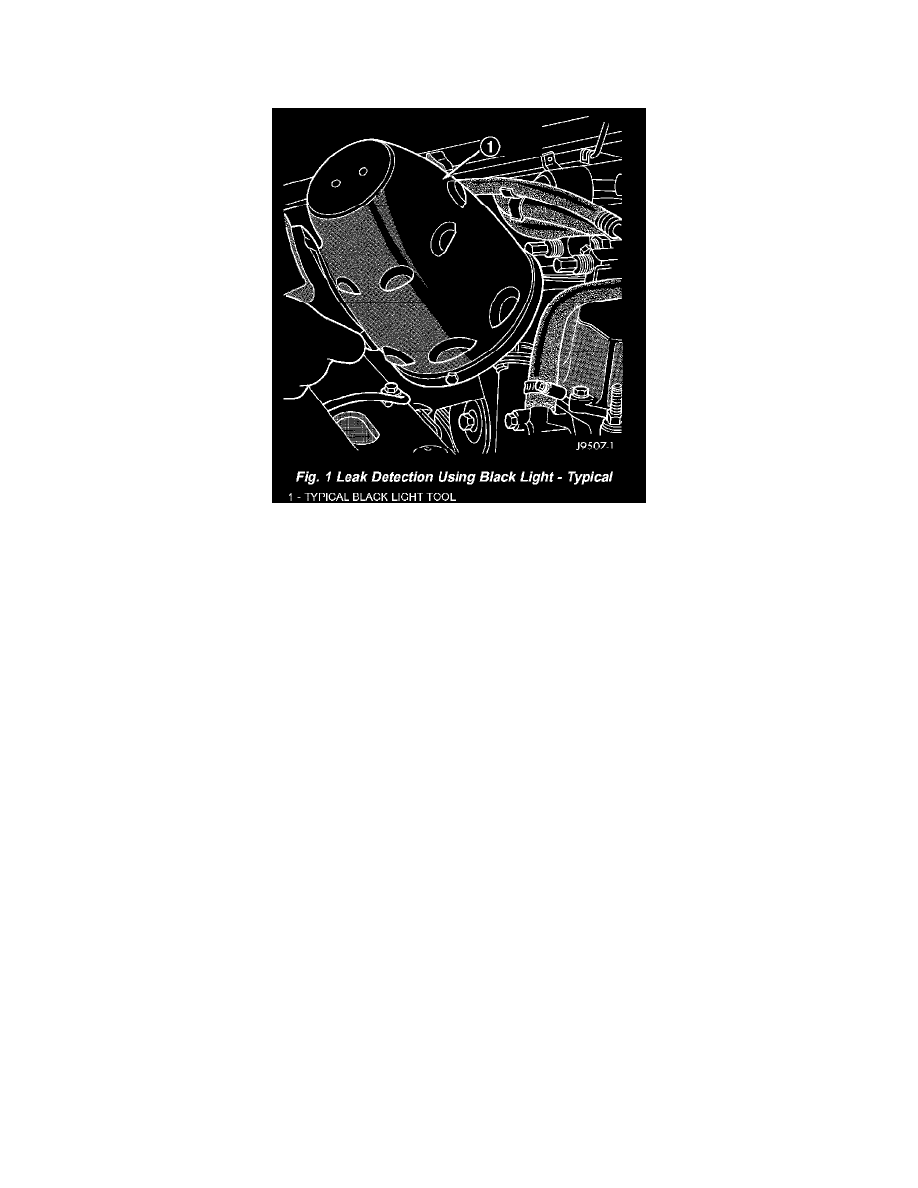Sprinter 2500 L5-2.7L DSL Turbo (2003)

Coolant: Testing and Inspection
DIAGNOSIS AND TESTING - COOLING SYSTEM LEAKS
ULTRAVIOLET LIGHT METHOD
A leak detection additive is available through the parts department that can be added to cooling system. The additive is highly visible under ultraviolet
light (black light). Pour one ounce of additive into cooling system. Place heater control unit in HEAT position. Start and operate engine until radiator
upper hose is warm to touch. Aim the commercially available black light tool at components to be checked. If leaks are present, black light will cause
additive to glow a bright green color.
The black light can be used in conjunction with a pressure tester to determine if any external leaks exist (Fig. 1).
PRESSURE TESTER METHOD
The engine should be at normal operating temperature. Recheck the system cold if cause of coolant loss is not located during the warm engine
examination.
WARNING: HOT, PRESSURIZED COOLANT CAN CAUSE INJURY BY SCALDING.
Carefully remove coolant recovery pressure container cap and check coolant level. Push down on cap to disengage it from stop tabs. Wipe inside of
container and examine lower inside sealing seat for nicks, cracks, paint, dirt and solder residue. Inspect radiator-to- pressure container hose for
internal obstructions. Insert a wire through the hose to be sure it is not obstructed.
Inspect cams on outside of pressure container. If cams are damaged, seating of pressure cap valve and tester seal will be affected.
